Cats2D Multiphysics > Developments
> Brownian motion
Semi-stochastic model of Brownian motion
The semi-stochastic
model demonstrated here uses the solution to the diffusion
equation as a probability distribution to randomly perturb
particle velocities during path integration. Some mathematical
details are found here.
This economical
treatment is accurate when a good random number generator is
used. The 32 bit random number generator typically provided by
rand() in C/C++ produces 2^31 (2.14 billion) distinct random
numbers. Apparently we should use no more than the square root
of this number (about 46,000) if we want an excellently
uniform distribution. This isn't enough—I routinely use
millions of particles—and the initial results showed signs of
a poor distribution. Satisfactory results were achieved after
I added a 64 bit permuted congruential
generator to Cats2D. As an added precaution, I use
separate random number streams to determine the direction and
size of the perturbation to avoid any correlation between
these variables.
In the following
tests, 1,824,459 particles are uniformly distributed in space
and colored to represent a linear stratification. On the left
is a plot of the particles themselves, represented by small
colored dots. On the right is a color shade plot of a least
squares projection of particle values onto the finite element
basis functions. The images look identical, but differ greatly
in how they were created.
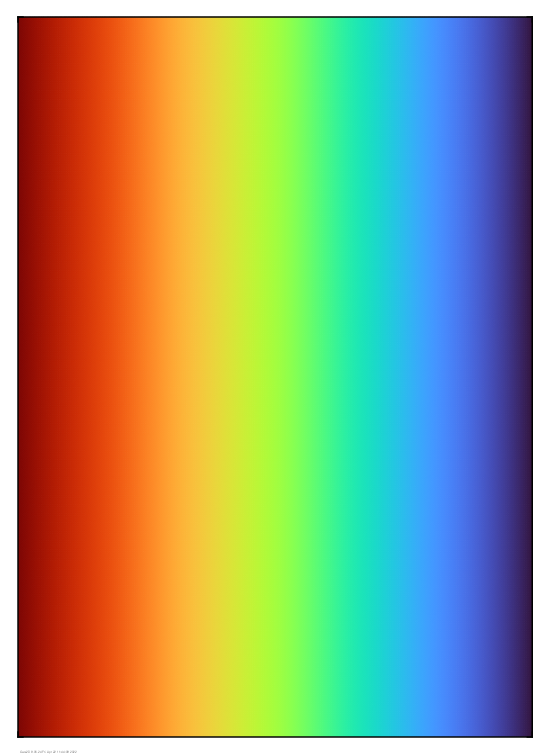
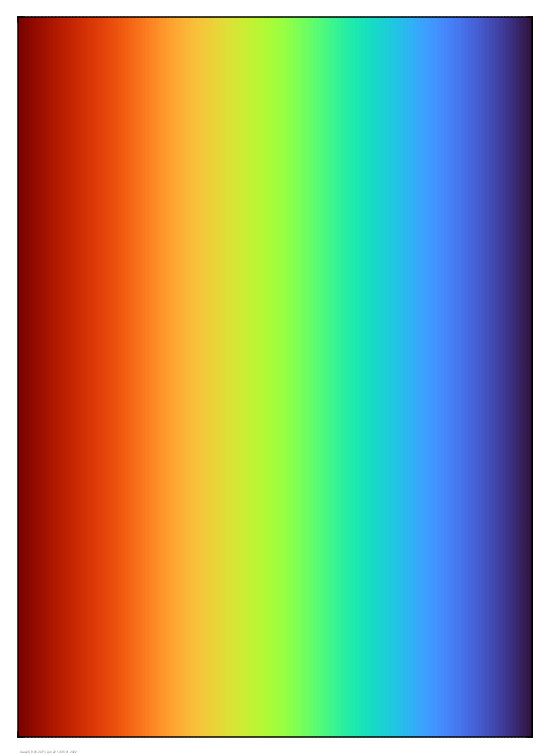
These next images
show particle plots after 5 time units of mixing by a steady
driven cavity flow. This flow configuration has two internal
lobes of trapped fluid that do not mix with the outer flow.
Mixing without Brownian motion is shown on the left, and with
Brownian motion is shown on the right (equivalent to Peclet
number = 10^5). The diffusive effect of Brownian motion is
evident.
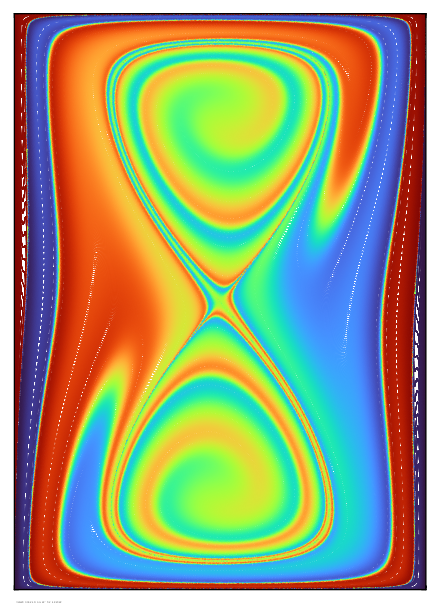
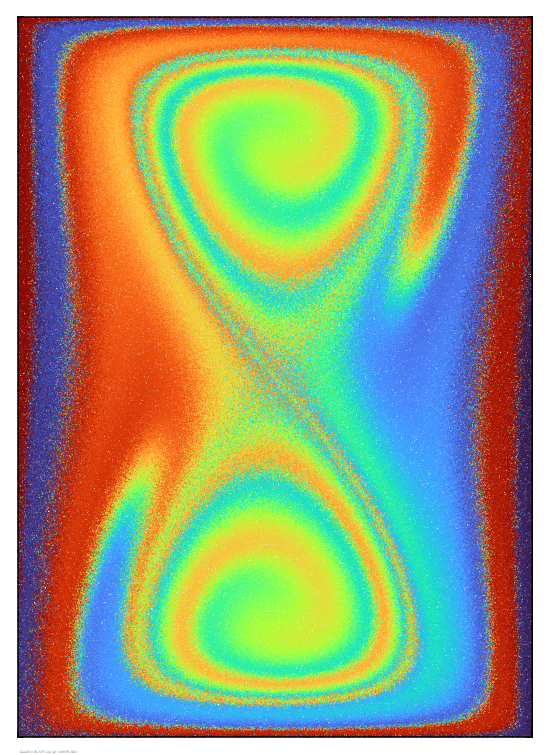
The effect is more
pronounced after 10 time units, though much structure is still
evident in the concentration field within different regions of
the flow.
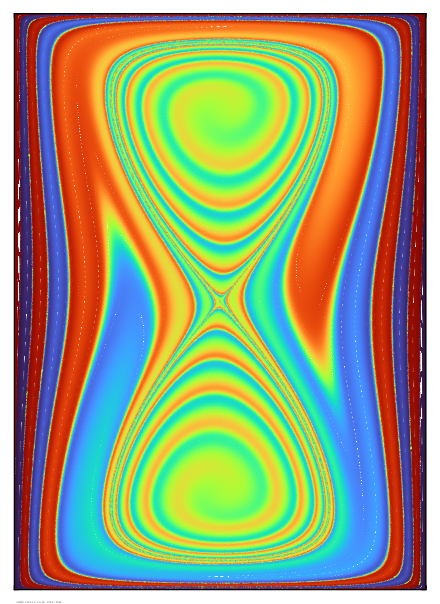
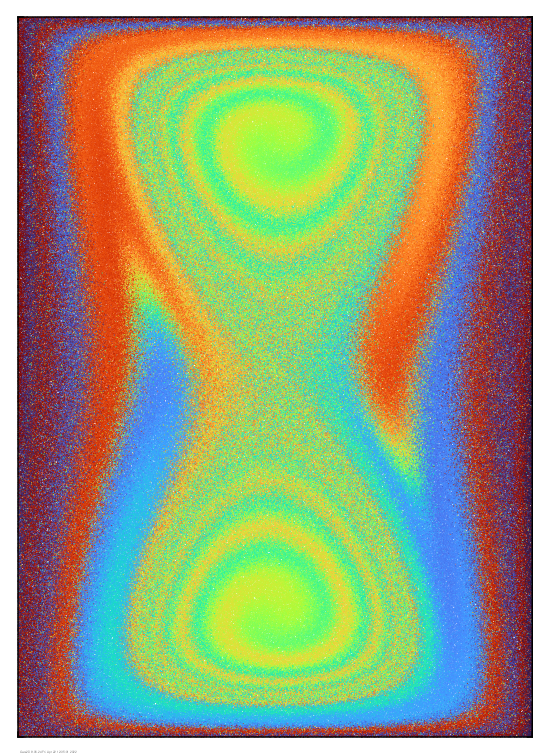
After 20 time units,
concentration layers have largely disappeared within separate
regions of the flow. Large gradients persist near the
separation streamline where transport occurs mostly by
diffusion.
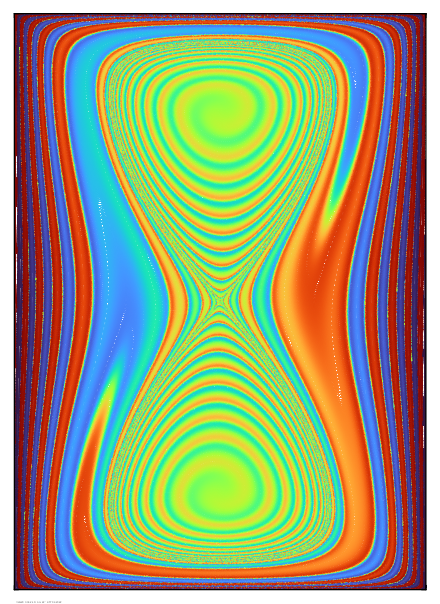
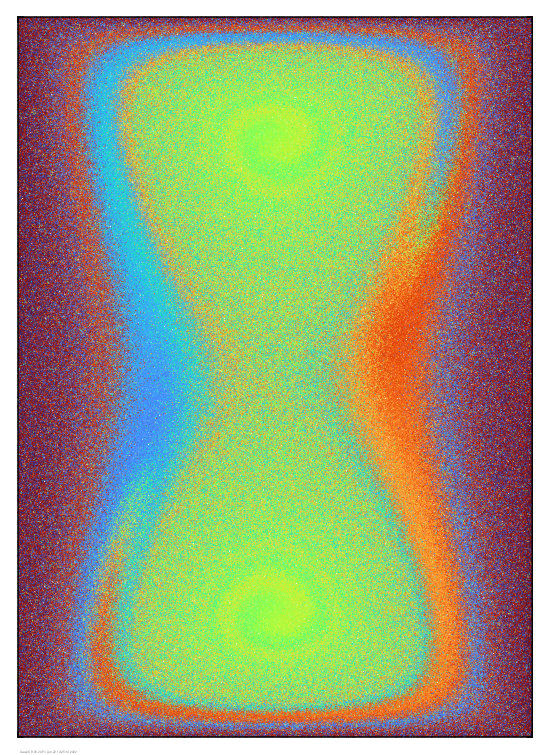
Next I show how
solutions to the convective-diffusion equation at Peclet =
10^5 compare to the concentration field obtained by projecting
the particle values onto a finite element basis.
After 5 time units:
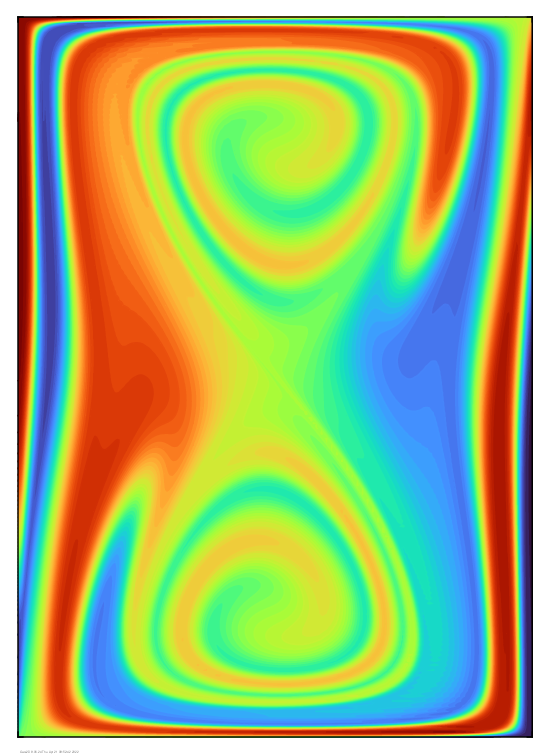
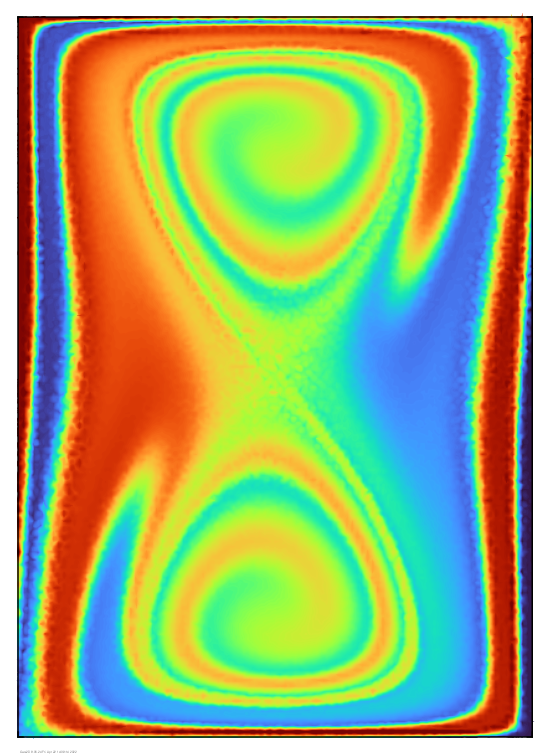
After 10 time units:
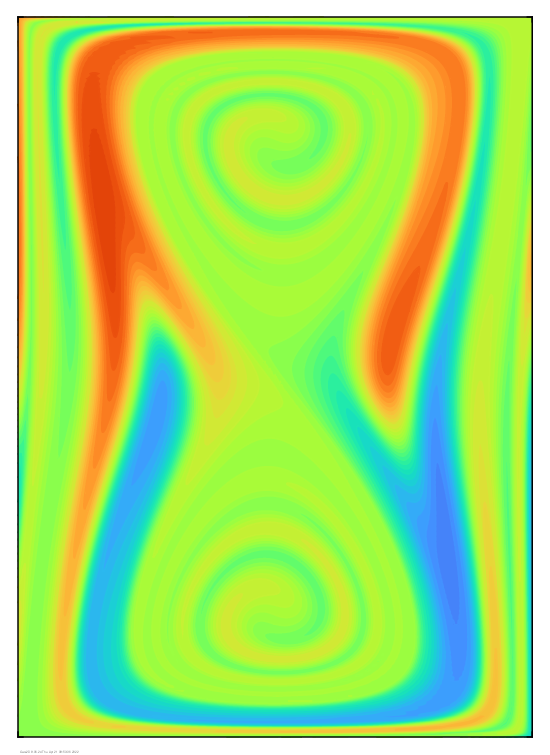
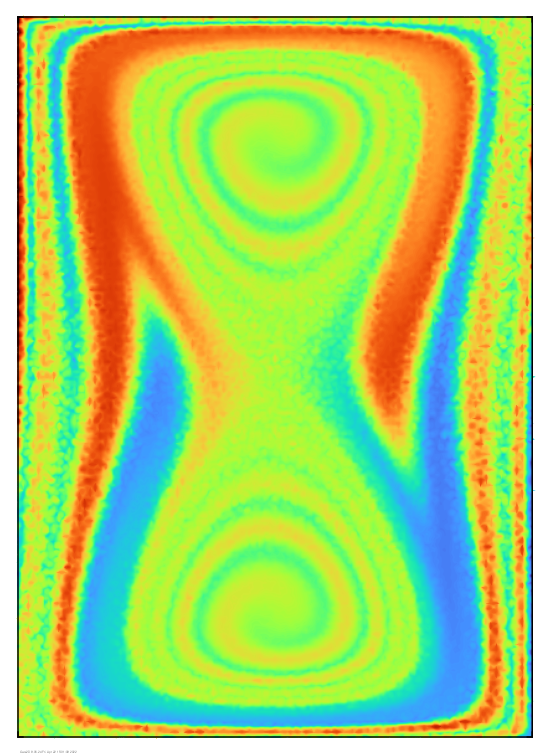
After 20 time units:
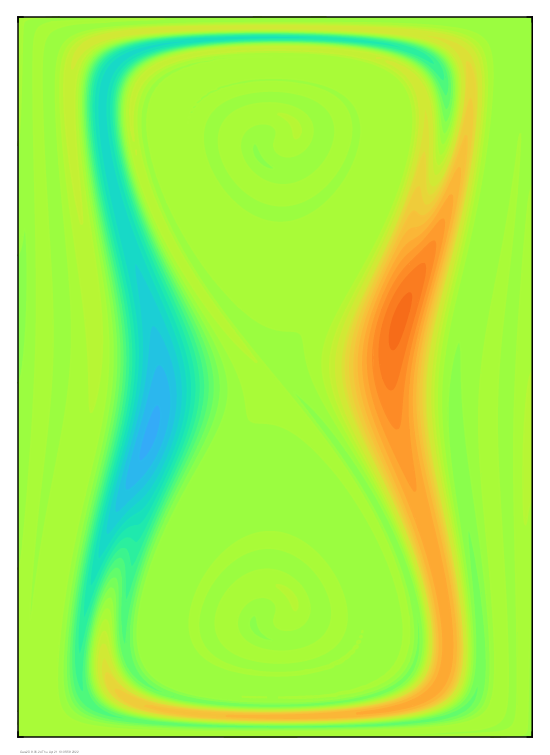
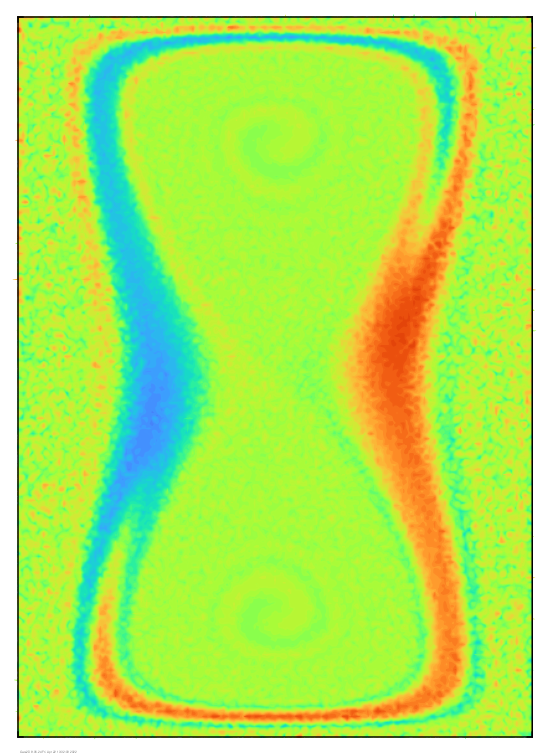
The projected field (shown on the right) is obviously noisy, but I think the results look pretty good overall.